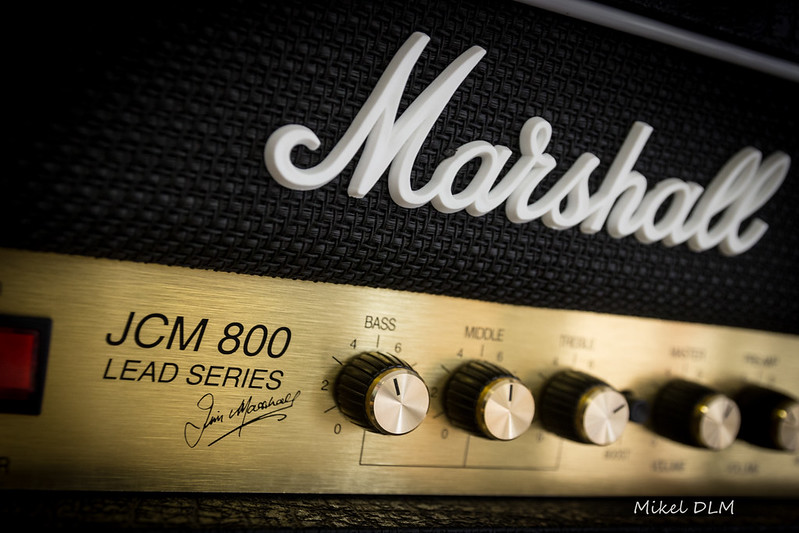Spotlight on: Marshall JCM800
Undoubtedly one of the most iconic series of guitar amplifiers of all time. Can any other amplifiers be considered to have had as much of an impact as the Marshall JCM800 on shaping the Hard Rock sound of the ’80s?

The first thing that is important to note is that the JCM800 was not a single amp model. The designation referred to a series of amplifiers with rather different architectures and characteristics. While they often get lumped together, this is an important distinction to make.
Marshall introduced the JCM800 series in 1981, with the 100 watt JCM800 2203 and 50 watt JCM800 2204. These were direct successors to the JMP 2203 and JMP 2204 amps of the late seventies. Like their predecessors, the newly introduced JCM800 amps had a master volume control. This facilitated ‘cranking’ the amp at lower volumes – effectively allowing the preamp stages to be overdriven while maintaining a sensible output volume from the poweramp. While non-master volume Marshalls had to be turned up LOUD to achieve distorted tones, the addition of a master volume allowed the same levels of distortion to be obtained at lower volume levels… or, as guitarists soon realised, for even higher levels of gain to be obtained if both the preamp gain and the master volume were dialed up high. This made the series a popular choice for hard rock, punk, and heavy metal musicians, whose genres of music demanded a crunchier and more saturated guitar tone.
Less common were the non-master volume JCM800 models – the JCM800 1959 ‘Super Lead’ and the JCM800 1987 – 100 watts and 50 watts, respectively. These single-channel, non-master volume amps, despite carrying the JCM800 designation, were essentially the spiritual successors to the iconic ‘Plexi’ Marshalls – the 1959 and 1987, and bore far more resemblance to the historic Plexis than to the other models in the series with which they now shared their name.
Another milestone in Marshall amp history was the introduction of clipping diodes and multiple channels. The JCM800 2205 and JCM800 2210 models not only had a master volume control, they also had two separate channels, allowing for distinct lead and rhythm tones to be dialed in and selected on the fly with a foot switch. These models featured a clipping diode in the lead channel to provide extra gain. While some ‘purists’ disliked the fact that there was an element of solid-state clipping, this was a concept that would remain a staple in Marshall’s higher gain amps going forward, with the introduction of the Silver Jubilee and JCM900 series.
